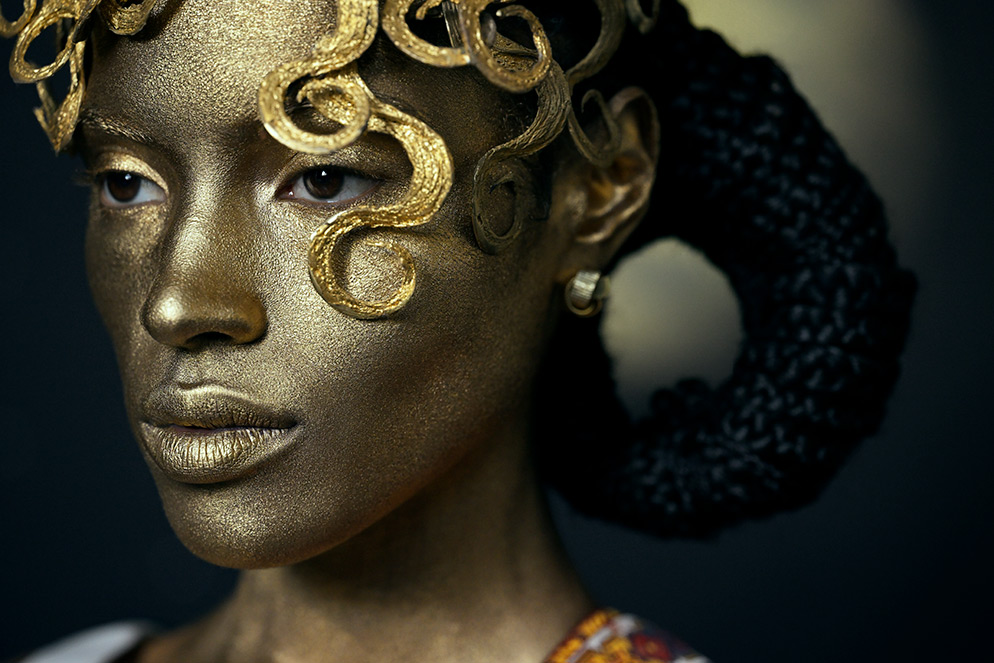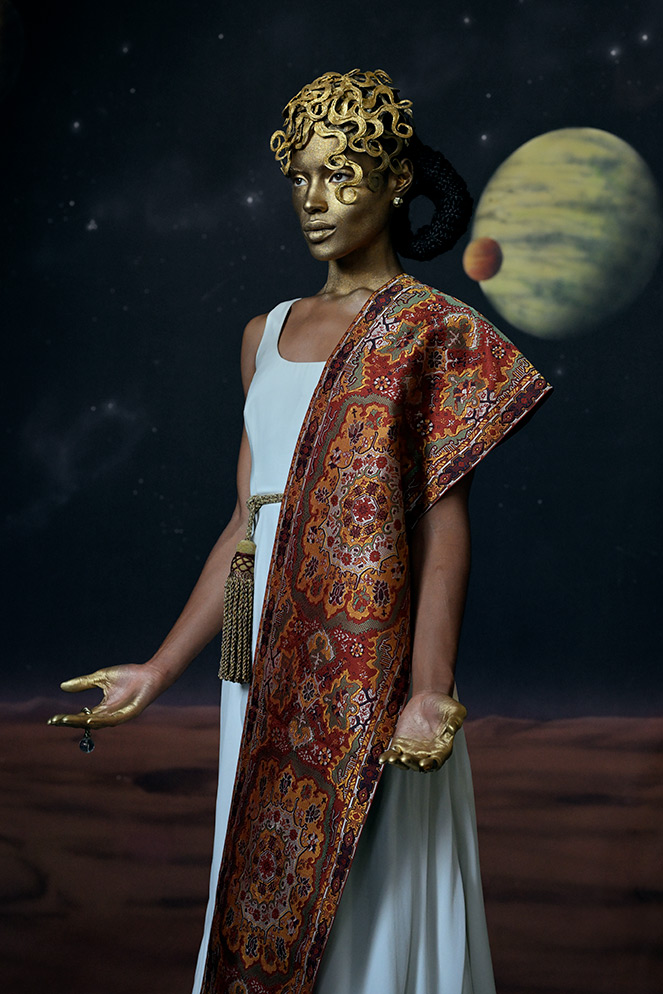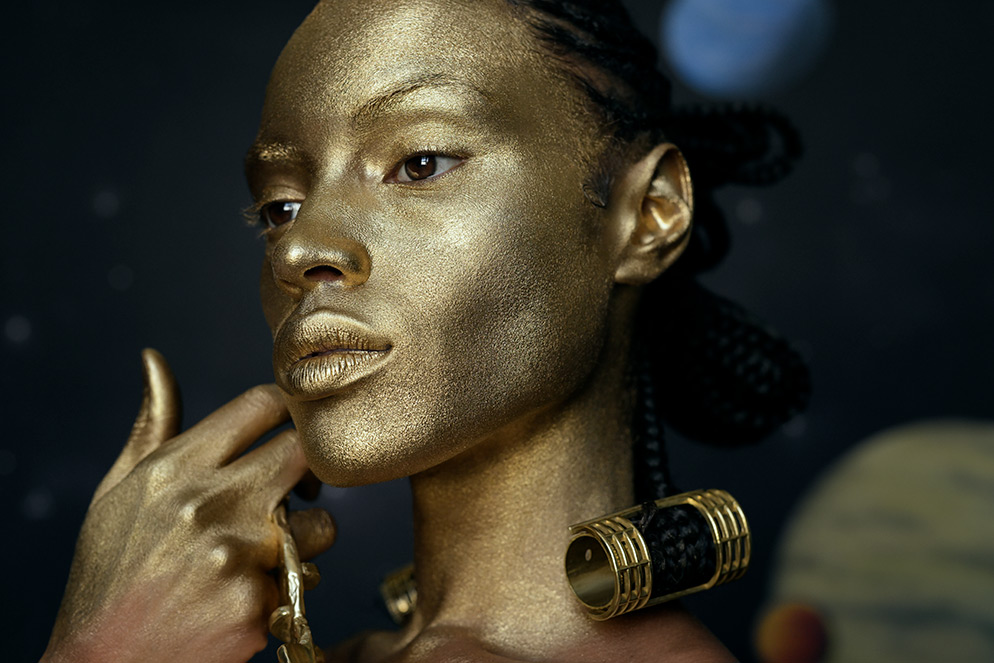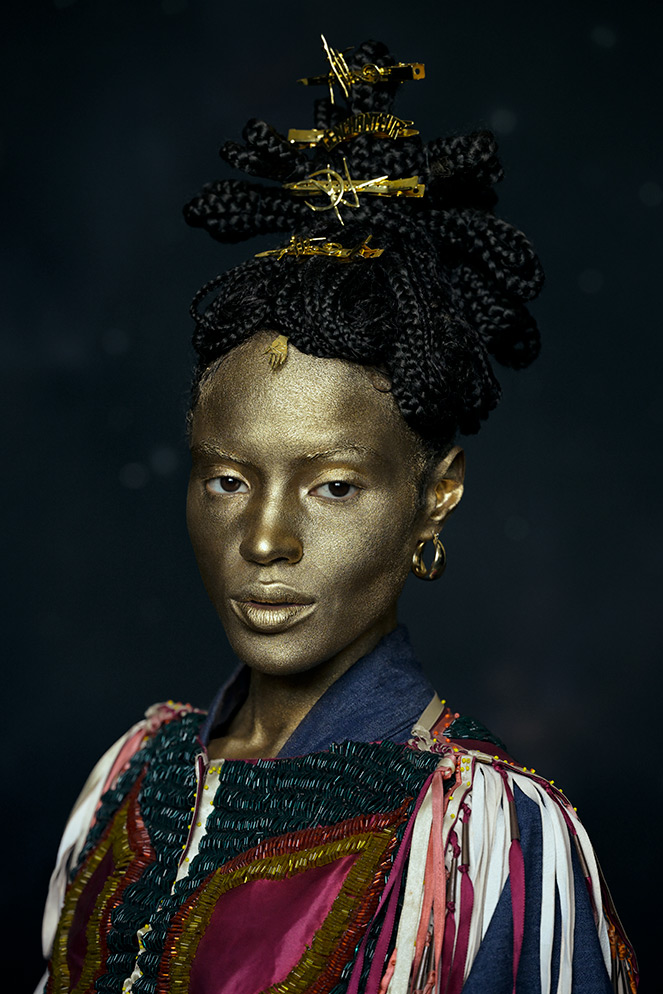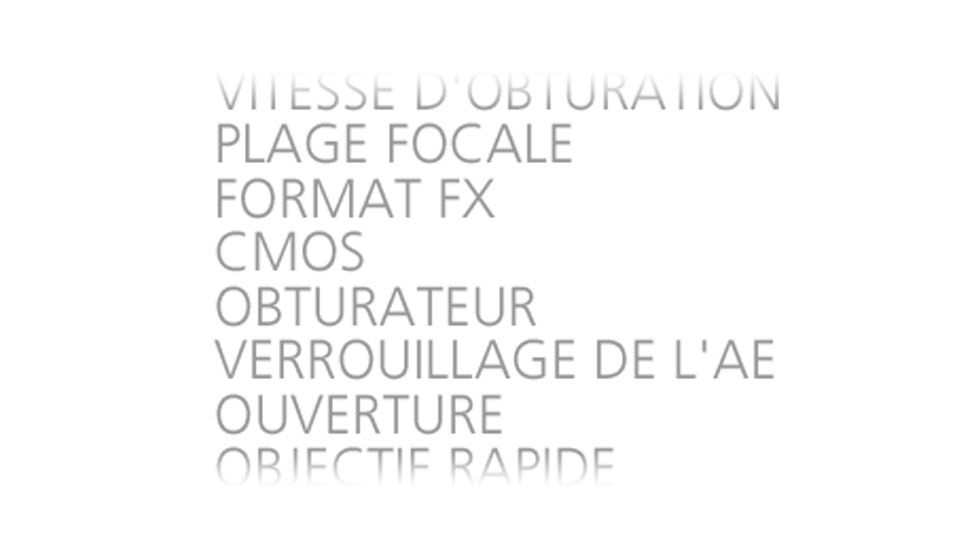It’s a Lock: How the Z 9’s Speed and Accuracy Creates Total Confidence
Here Eye AF assured sharpness no matter if Delphine decided to make adjustments in the composition to best frame the model in relation to the background. Z 9, NIKKOR Z 50mm f/1.2 S, 1/320 second, f/4, ISO 800, manual exposure, Matrix metering.
Talking not long ago with Delphine Diallo we were reminded that the Z 9’s Eye AF and rapid frame advance aren’t appreciated only by wildlife and sports photographers. Delphine is a fine-art and portrait photographer, and there’s no running, jumping, climbing, whirling or vaulting going on in Delphine’s images. So why did “20 frames per second” and “the speed and persistence of Eye AF” become the focus of our conversation?
Because of the in-between moments when a pose shifts and the gesture of the image changes. Because of nuances of expression, glance and attitude. Because you don’t know what you might have missed until its captured at 20 fps. And because for Delphine the Z 9’s Eye AF and 20 frames per second advance are companions for confidence.
The carefully-wrought, detailed background indicates a visitor from elsewhere. “What I was intending here, with the open, golden hands, is both the giving and receiving of a gift,” Delphine says. The model’s eyes are a key to the image, as was Delphine’s confidence in the Z 9’s ability to lock on and maintain focus. Z 9, NIKKOR Z 85mm f/1.8 S, 1/125 second, f/5, ISO 1600, manual exposure, Matrix metering.
The Eyes Have It
Getting the eyes of her subjects sharp is, she says, “an obsession,” so much so that she tended to manually focus her images, trusting her judgment over AF technology. The lock-on/stay-on accuracy of Eye AF changed that, and when combined with 20 frames per second she was able to trust the technology to give her complete control over the moment…and the moments that follow.
“I have to know that all the frames will be sharp, that I can keep shooting and not interrupt the flow,” Delphine says. Which is incredibly important because Delphine’s images are concept-driven, highly controlled and built on complex ideas. Everything counts—every tone, texture and illustration on carefully conceived and created backgrounds; the precise placement and effect of light; the precision of thought about angle and pose. And all the while, she has to be open to inspiration and the improvisational adjustments it requires.
Which brought into our conversation an interesting relationship between the artist and the camera. Essentially, Delphine’s appreciation of the Z 9 has a lot to do with not needing to think much about the camera at all. “The goal is to have the tool be in service to the idea,” she says, “and I was impressed with the all the choices I could have with this camera.” Once those choices were made and the camera set up to her liking, it was essentially full attention on the subject and the set, with total confidence that the camera would take care of the capture.
Delphine often uses garments as clues to indigenous cultures. The clothing adding texture and resonance to this image was made by native Americans for use in rituals and ceremonies. Delphine often intends her pictures to “open doors to imagination” for the viewer. Z 9, NIKKOR Z MC 105mm f/2.8 VR S, 1/250 second, f/4.5, ISO 1600, manual exposure, Matrix metering.
I have to know that all the frames will be sharp, that I can keep shooting and not interrupt the flow.
The Visual Narrative
Delphine’s fine-art portraits are allusive. Concept is the central factor, and it springs from her interests, curiosity, concerns, wide-ranging education and heritage. There’s a strong subtext of the interpretation of self and an exploration of what’s below the surface of identity. Images reflect the role of culture, tradition and pride. There is often a strong emotional reaction to her photographs, and there are also questions, perhaps because she is driven to create with a vision she does not see elsewhere in photography.
“The visual narrative is the way I use photography to enhance and push the idea of our own perception of the complex beings we are,” she says. “Awareness of self is a beginning.”
The camera’s role in all of this is to be totally reliable, so she can devote her efforts to the expression of what she and her photos are all about. We’ve got that part of the process covered.
Z 9 BTS - Behind the camera on set with the Z 9 and Delphine Diallo.

